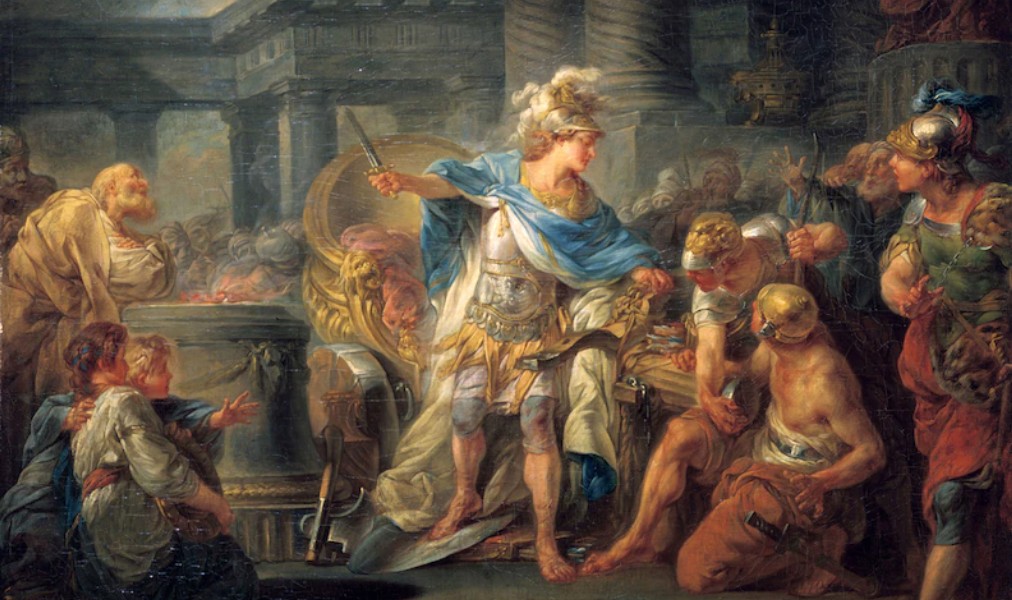Although Homer's epic poem Iliad is approximately 2,700 years old, many of the protagonists have names that we find familiar today - particularly Alexandros (Alexander), Helene (Helen), Hektor (Hector), and Kassandra (Cassandra).
Greek mythology enthusiast Spencer McDaniel has compiled fascinating facts on his blog Tales of Times Forgotten.
As the IU Bloomington student wrote: "As it turns out, the vast majority of the names that are used in the Iliad have never been widely used in English, but a handful of these names have passed into English through various channels, mostly not through the Iliad itself."
The Greek mythology enthusiast cites that many of these Ancient Greek names entered the English language via Latin sources.
The name Alexander
In the Iliad, Paris, the son of Priam and brother of Hector, has two different names: Πάρις (Páris), which is most likely a Greek rendering of the Luwian name Pari-zitis, and Ἀλέξανδρος (Aléxandros), which is of Greek derivation. The name Ἀλέξανδρος was not especially common in the Greek world during the Archaic Period (lasted c. 800 – c. 490 BCE) or the Classical Period (lasted c. 490 – c. 323 BCE), but it was importantly a name that was used in the royal household of the Argead Dynasty of the kingdom of Makedonia in northern Greece.
Then, at the very end of the Classical Period, King Alexandros III of Makedonia (i.e., the man commonly known in English as Alexander the Great) ended up conquering the Achaemenid Persian Empire and becoming the most famous conqueror in all of Greek history. As a result of this, the name Ἀλέξανδρος saw an explosion of popularity in the Hellenistic Period (lasted c. 323 – c. 30 BCE) and afterward.
The name Ἀλέξανδρος subsequently passed into Latin as Alexander and, eventually, from Latin, into English. Alexander the Great was a well-known figure throughout Europe during the Middle Ages, due in part large part to the Alexander Romance, a fictional romance very loosely based on Alexander’s historical life that circulated widely during the Middle Ages through a variety of recensions and translations.
The Alexander Romance may incorporate material from sources written as early as the third century BCE, but the version of the text that serves as the basis for the surviving recensions was compiled by an anonymous Greek-speaking author who lived in Alexandria, probably at some point between c. 140 and c. 340 CE. Later authors substantially revised, expanded, and redacted various parts of the text in various ways, resulting in many different versions of it that are sometimes drastically different from each other. Through these different versions, it became one of the most widely read works of secular literature throughout the medieval period.
The name Alexander was already prominent in Britain by the twelfth century CE. Three medieval Scottish kings—Alexander I (lived c. 1078 – 1124 CE), Alexander II (lived 1198 – 1249 CE), and Alexander III (lived 1241 – 1286)—bore the name, as well as the prominent English Scholastic theologian and Franciscan friar Alexander of Hales (lived 1185 – 1245 CE).
The French poet Jacques de Longuyon in his Les Voeux du Paon (written in 1312) names Alexander the Great as one of the “Nine Worthies,” a canonical set of nine legendary and historic men known for their extraordinary valor. The canon neatly consists of three “pagans,” three Jews, and three Christians, with Alexander being one of the three “pagans.”

After Jacques de Longuyon’s poem, references to the Nine Worthies became common in literature and artistic depictions of all nine men as a set started showing up as decorations everywhere for the next several centuries, including in city halls, on fountains, in manuscripts, in woodcut illustrations, and just about everywhere you can imagine.
Alexander the Great’s fame and, as a result, his name became ubiquitous. Geoffrey Chaucer (lived early 1340s – 1400) has the monk say in “The Monk’s Tale,” lines 2631–2633:
“The storie of Alisaundre is so commune
that every wight that hath discrecioun
hath herd somwhat or al of his fortune.”
Thus, although its popularity has waxed and waned, the name Alexander has remained in continuous use in the English-speaking world since at least the twelfth century CE. The Dictionary of Medieval Names from European Sources has an entry for the name Alexander that lists what looks like over a hundred some sources from medieval England alone from the twelfth century CE onwards, written in Latin, Dutch, Early Modern English, and Walloon, that mention medieval English people named Alexander.

To read equally fascinating details about the name Helen, Hector and Cassandra, click HERE.
READ MORE: An Amazing Before and After of an Ancient Greek Stadium Excavation.


